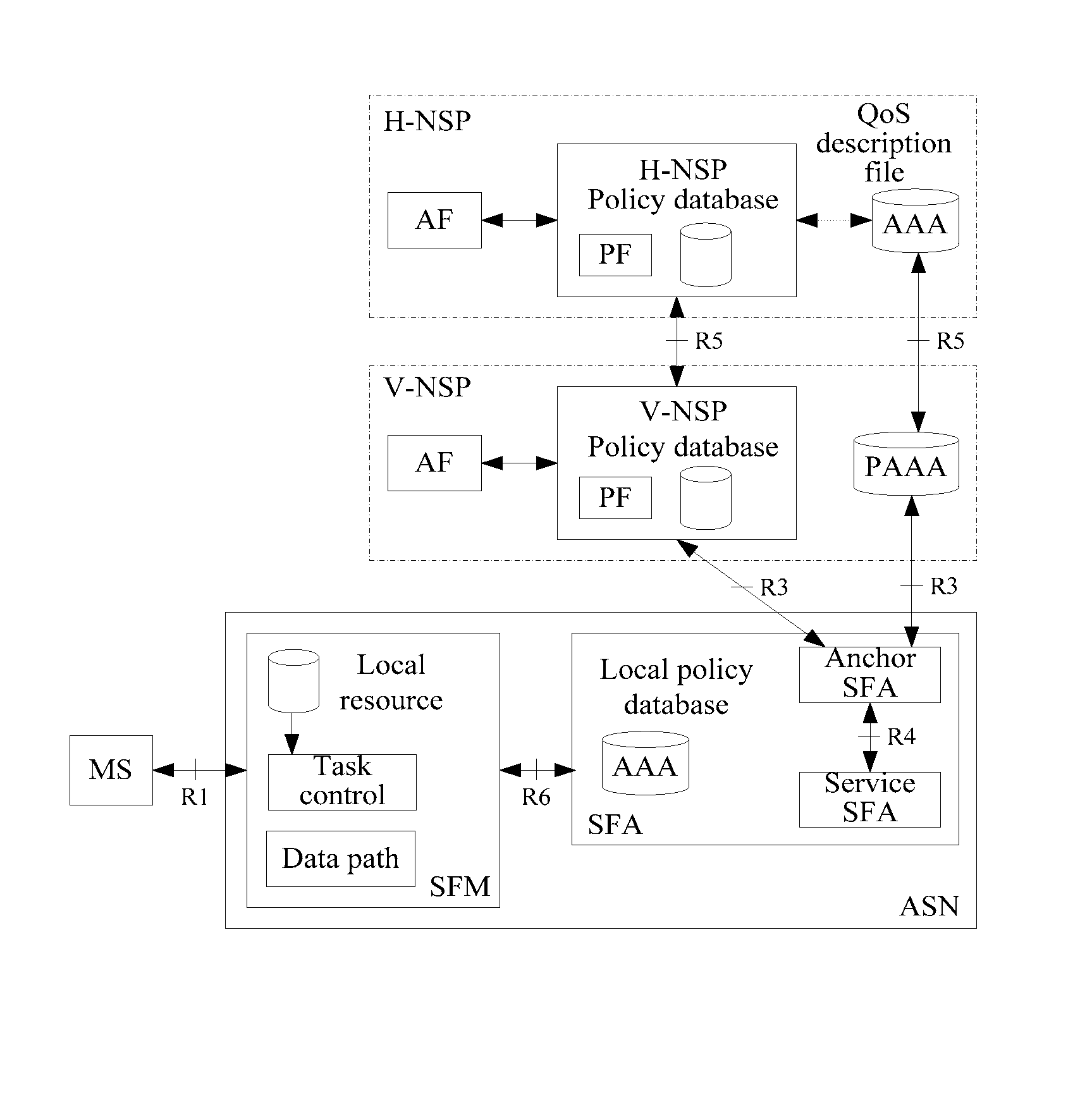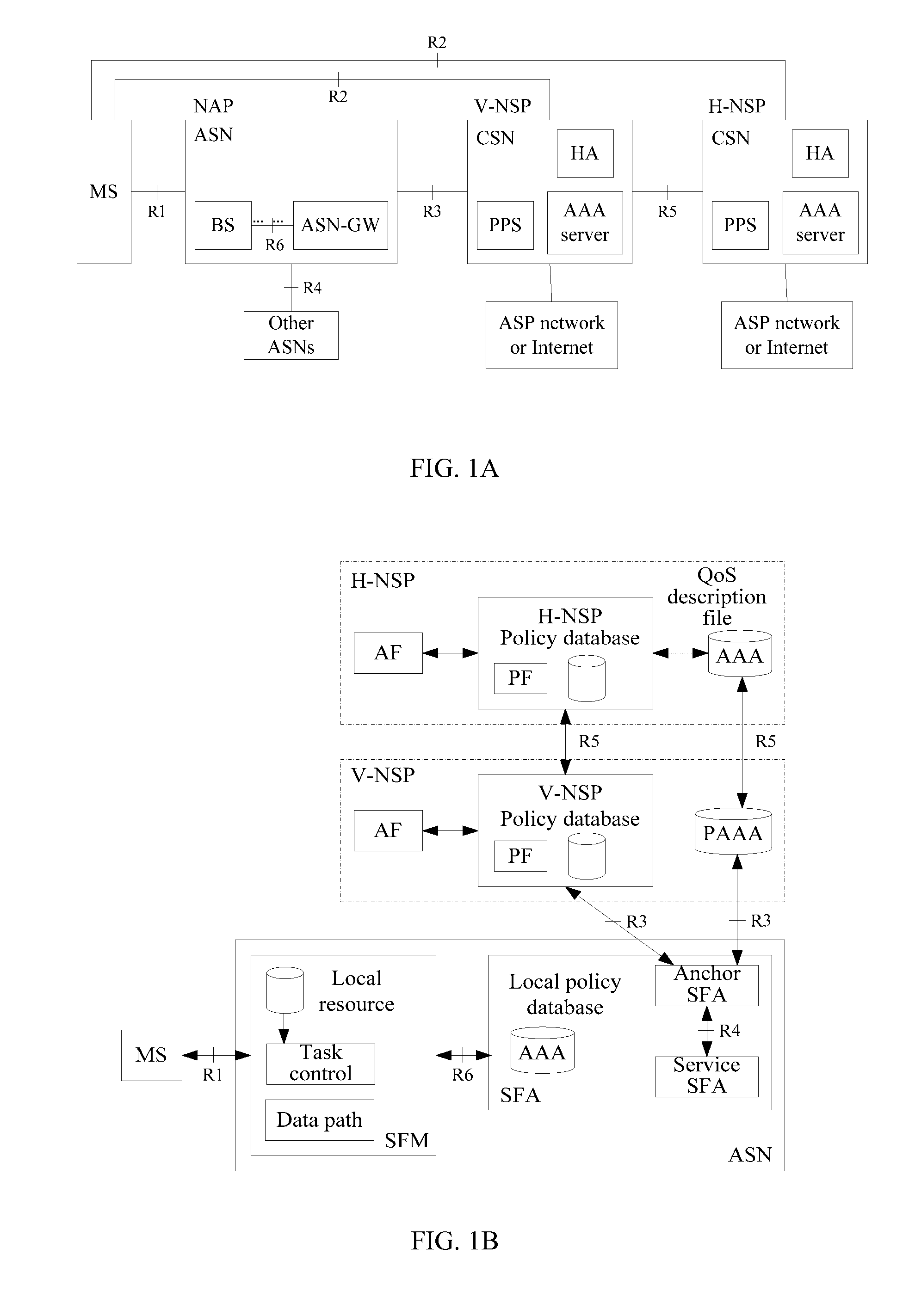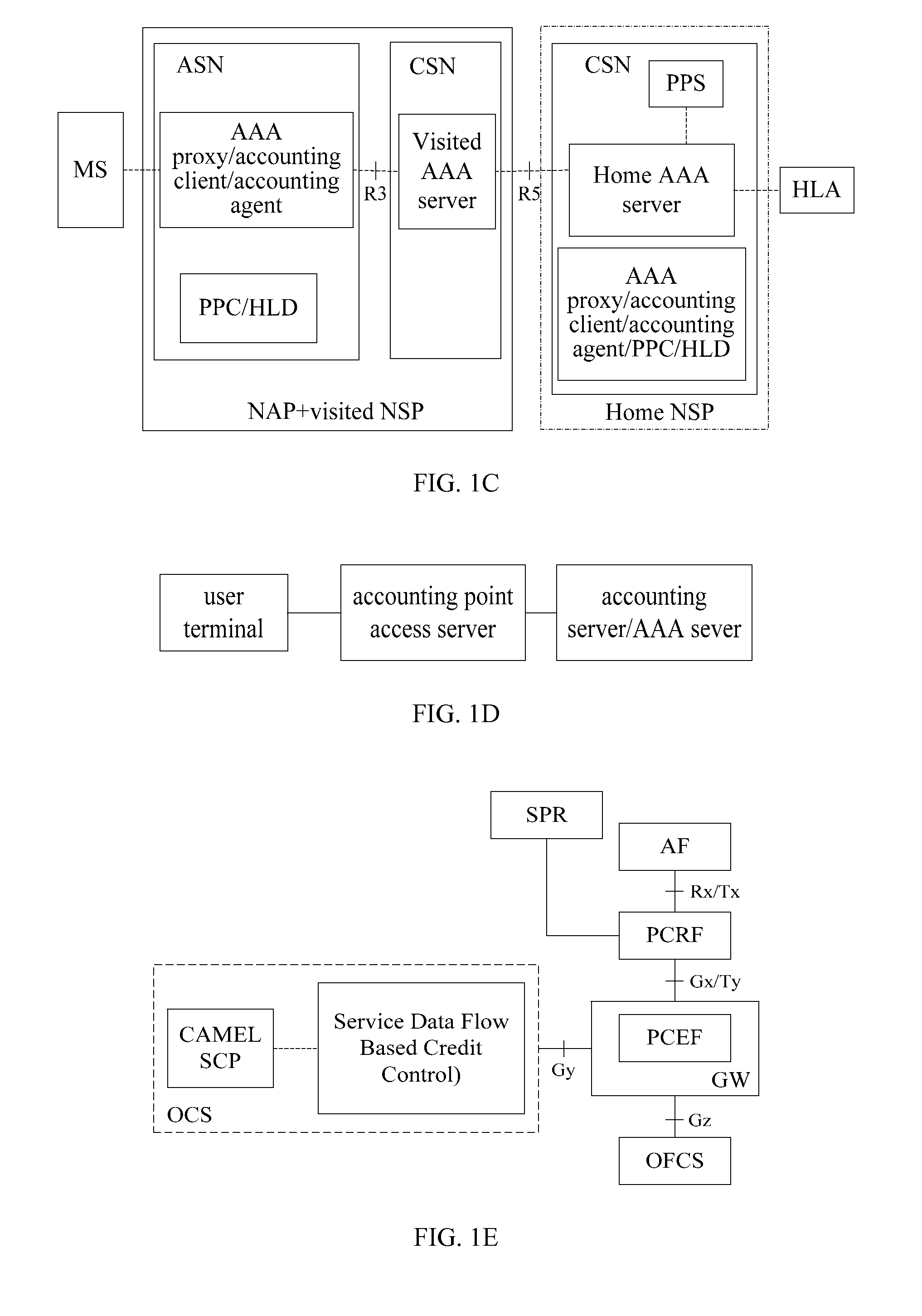System and charging control method of network convergence policy and charging control architecture
a charging control and network convergence technology, applied in the field of network convergence technology, can solve problems such as the inability to find convergence solutions currently availabl
- Summary
- Abstract
- Description
- Claims
- Application Information
AI Technical Summary
Benefits of technology
Problems solved by technology
Method used
Image
Examples
first embodiment
[0036]FIG. 2A is a schematic view showing convergence of a WiMAX network with a PCC architecture according to the present invention. As shown in FIG. 2A, PDF is connected to ASN-GW via interface R3 and to PCRF via interfaces Gx / Ty. PDF serves as a protocol converter between PCRF and ASN-GW and / or a policy enforcer of the IP layer, that is to say, PDF converts message from interfaces Gx / Ty of PCRF into message of interface R3 to transmit the message to ASN-GW, and converts message from interface R3 of ASN-GW into message of interfaces Gx / Ty to transmit the message to PCRF. In particular, PDF can be connected to data path function (DPF) entity, or SFA, or accounting client / accounting agent in ASN-GW. The following description is made in the case PDF is connected to SFA in ASN-GW. PCRF determines PCC rules based on QoS parameters authorized by a service layer, charging policy information and user subscription information, and can further map QoS parameters authorized by the service lay...
third embodiment
[0037]FIG. 2C is a flowchart showing QoS authorization control in the present invention. As shown in FIG. 2C, QoS authorization procedure triggered by AF comprises the following steps:
[0038]Step 201C: Proxy-call session control function (P-CSCF) of AF, such as an IP multimedia system (IMS) establishes interaction with MS at the application layer.
[0039]Step 202C: AF authorizes MS at the service layer, and sends a service parameter authorization request to PCRF to send QoS parameters authorized by the service layer and information associated with the service layer down to PCRF. Information associated with the service layer includes at least streaming media description information provided by AF to PCRF, such as WiMAX content, which includes such information as reduced resources indication and QoS priority. If MS resides in the visited network, AF will find the home PCRF (H-PCRF) based on the identifier of the user, such as an IMS private identifier, and send the QoS parameters authori...
fourth embodiment
[0047]FIG. 2D is a flowchart showing QoS authorization control in the present invention. As shown in FIG. 2D, the QoS authorization procedure for setting up IP-CAN bearer and triggered by ASN includes the following steps:
[0048]Step 201D is identical with Step 201C.
[0049]Step 202D: MS initiates IP-CAN bearer establishment or modification request. The IP-CAN bearer establishment or modification request carries with home address of MS and bearer information, such as WiMAX session identifier, SFA identifier, for bearer binding.
[0050]Steps 203D-204D: SFA sends a request for service parameter authorization to PDF; after receiving the request for service parameter authorization, PDF converts the service parameter authorization request for interface R3 into service parameter authorization request for interface Gx / Ty, and sends the request for service parameter authorization to PCRF. If MS resides in the visited network, SFA sends the request for service parameter authorization to V-PDF (vis...
PUM
 Login to View More
Login to View More Abstract
Description
Claims
Application Information
 Login to View More
Login to View More - R&D
- Intellectual Property
- Life Sciences
- Materials
- Tech Scout
- Unparalleled Data Quality
- Higher Quality Content
- 60% Fewer Hallucinations
Browse by: Latest US Patents, China's latest patents, Technical Efficacy Thesaurus, Application Domain, Technology Topic, Popular Technical Reports.
© 2025 PatSnap. All rights reserved.Legal|Privacy policy|Modern Slavery Act Transparency Statement|Sitemap|About US| Contact US: help@patsnap.com



